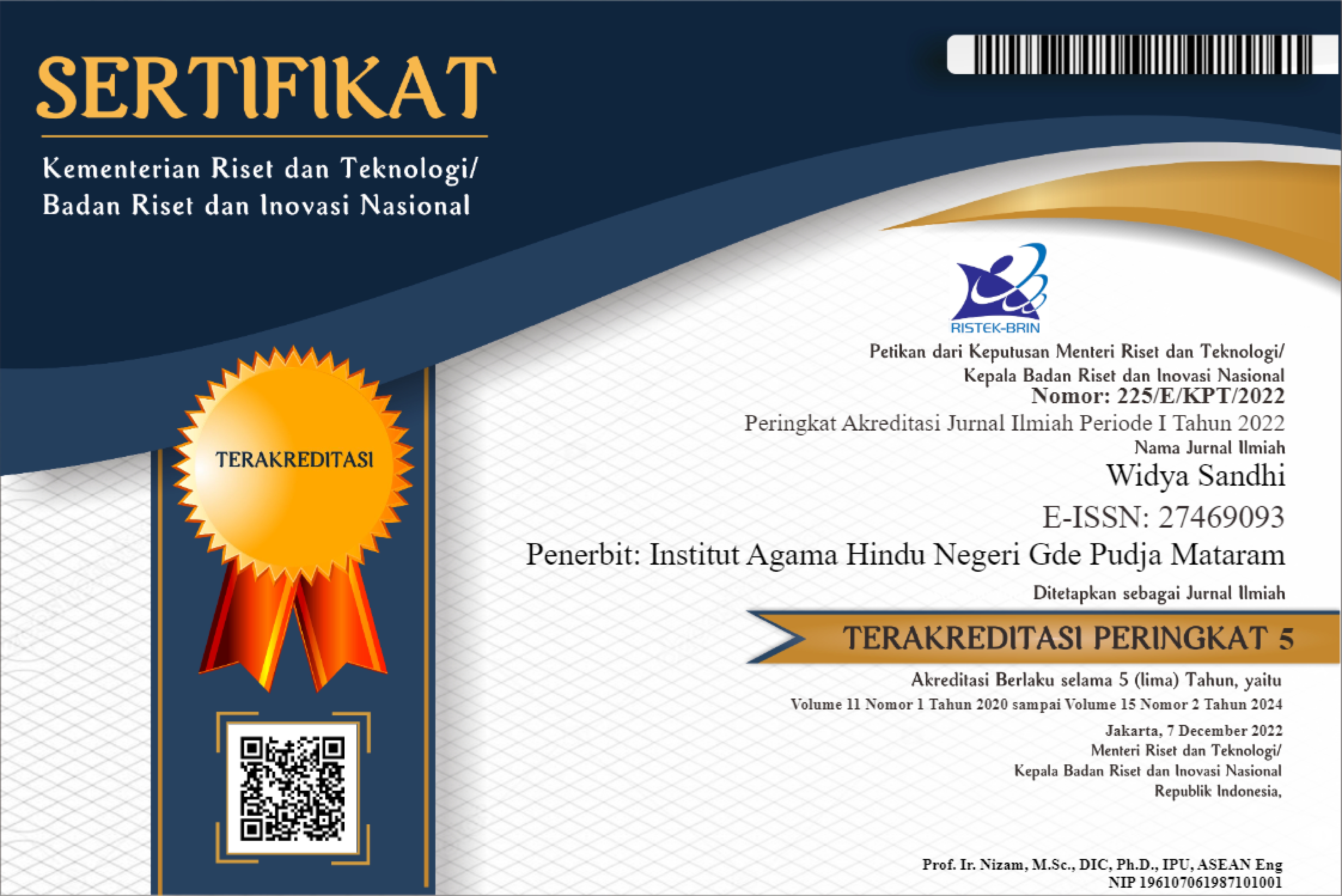ANALISIS KONSEP TEO-FILOSOFIS TAUHID DAN DVAITA VEDANTA (STUDI KOMPARATIF)
Abstract
This research focuses on the study of theo-philosophical concepts in Tauhid and Dvaita Vedanta. Both concepts view God as causa prima and different from the human spirit and material nature. Through interpretive and hermeneutic frameworks of thought, in the study of religions, it is certainly very interesting to explore the theological teachings in it. This is even more so in terms of the theo-philosophical concepts of Tauhid and Dvaita Vedanta. In fact, Tauhid and Dvaita Vedanta both view God as personal, having character, and different from humans. Both also position God who has a distance from humans. Furthermore, the aspect of difference is rooted in an epistemological framework, namely Tauhid bases his aqidah on the commands and words of Allah, while Dvaita Vedanta does not base bhakti on God's commands, but through Lela and Krida as the basis. Therefore, Dvaita Vedanta views love as the basis for connecting with God (bhakti yoga). Understanding the two concepts of Tauhid and Dvaita Vedanta will create a unifying reflection in terms of similarities and differences.
References
Al-Fayyadi, M. (2012). Teologi Negatif IBN'Arabi. Yogyakarta: LKiS.
'Arabi, M. a.-D. (2006). al-Futuhat al-Makkiyyah. ed. Ahmad Syamsuddin, Vol. I-IX, cet. II. Beirut: Dar al-Kutub al-'Ilmiyyah.
Donder, I. K. (2006). Brahmawidya: Teologi Kasih Semesta. Surabaya: Paramita.
Gazur-I-Ilahi, S. I. (1986). Mengungkap Misteri Sufi Besar: Mansur Al-Hallaj. Jakarta: Rajawali.
Krishna, A. (2022). Bhagavad Gita. Retrieved Agustus 5, 2022, from https://bhagavadgita.or.id/percakapan-10/
Miles, M. B. & Huberman, M. (1992). Analisis Data Kualitatif. Jakarta: Penerbit. Universitas Indonesia
Paramahamsa, K. (2012). Dvaita Vedanta. Tirupati: L.V Subrahmanyam I.A.S.
Putra, N. P. (2014). Kamu Adalah Tuhan. Jakarta: Media Hindu.
Radhakrishnan, S. (2008). Upanisad-Upanisad Utama. Surabaya: Paramita.
Rahmatullah, M. (2016). Dualisme dalam Kesatuan untuk Mencapai Ma'rifah Perspektif Kh. Asrori Ishaqi. Teosofi: Tasawuf dan Pemikiran Islam, 29-56.
Umar, N. (2012, Maret 12). Maqam Ahadiyyah dan Wahidiyyah. Retrieved from Republika.co.id: https://www.republika.co.id/berita/m0qvzy/maqam-ahadiyyah-dan-wahidiyyah-1
Vrajaprana, P. (2014). Vedanta: Sebuah Pengantar Sederhana. Jakarta: Media Hindu

This work is licensed under a Creative Commons Attribution-NonCommercial-ShareAlike 4.0 International License.
Authors who publish with this journal agree to the following terms:
- Authors retain copyright and grant the journal right of first publication with the work simultaneously licensed under a Creative Commons Attribution-ShareAlike 4.0 International License. that allows others to share the work with an acknowledgment of the work's authorship and initial publication in this journal.
- Authors are able to enter into separate, additional contractual arrangements for the non-exclusive distribution of the journal's published version of the work (e.g., post it to an institutional repository or publish it in a book), with an acknowledgment of its initial publication in this journal.
- Authors are permitted and encouraged to post their work online (e.g., in institutional repositories or on their website) prior to and during the submission process, as it can lead to productive exchanges, as well as earlier and greater citation of published work (See The Effect of Open Access).






.jpg)




